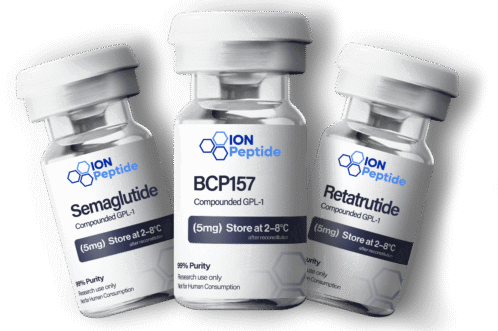Peptide Synthesis
By Peptide Information
At IonPeptide.com, we believe that knowledge is power — especially when it comes to science. Our peptides are offered exclusively for in-vitro research purposes, giving scientists reliable tools to explore breakthroughs in medicine, biology, and biotechnology.
Important Notice: Our peptides are not approved for human or animal use, nor are they intended to diagnose, treat, or cure any disease. They are strictly for laboratory research and educational applications.
What is Peptide Synthesis?
Peptide synthesis is the process of building peptides by linking amino acids together through peptide bonds. Thanks to advancements in chemistry and technology, this process has become far more efficient than when it was first developed — allowing researchers to create highly precise, custom peptides for a wide range of applications.
Today, synthetic peptides play an essential role in scientific research, drug discovery, and medical innovation. As the field of peptide science continues to grow, peptide synthesis remains at the heart of groundbreaking discoveries that drive progress in health and biotechnology.
How Peptides are Synthesized?
Peptides are created by linking amino acids together — usually by attaching the carboxyl group (C-terminus) of one amino acid to the amino group (N-terminus) of another. Unlike how peptides are built naturally in living organisms, synthetic peptide synthesis follows a controlled C-to-N direction, allowing scientists to build custom peptides with precision.
Because there are 20 naturally occurring amino acids — and many more that can be synthesized — the possibilities for new peptide designs are nearly endless. However, peptide synthesis is a delicate process. Amino acids have reactive groups that, if left uncontrolled, can lead to unwanted byproducts, truncated chains, or reduced purity.
To prevent these issues, chemists use “protecting groups” — temporary chemical shields that keep certain parts of the amino acid from reacting until the right moment:
N-terminal protecting groups: Shield the N-terminus so the peptide can be built step by step. Common examples include Boc (tert-butoxycarbonyl) and Fmoc (9-fluorenylmethoxycarbonyl).
C-terminal protecting groups: Used in some synthesis methods (such as liquid-phase synthesis) to control reactivity at the carboxyl end.
Side chain protecting groups: Safeguard the reactive side chains of amino acids to prevent unwanted side reactions. These are removed at the very end of synthesis using strong acids, leaving a pure, correctly assembled peptide.
Thanks to these controlled methods, researchers can create highly accurate and reproducible peptides for research, drug development, and beyond.
Peptide Synthesis Processes
Peptides can be made using different methods, but today’s gold standard is Solid-Phase Peptide Synthesis (SPPS). While the older Solution-Phase Synthesis (SPS) method is still occasionally used for large-scale production, SPPS is preferred because it offers higher yield, better purity, and faster turnaround times.
SPPS follows a simple, step-by-step cycle:
Attach the first amino acid to a solid polymer resin.
Protect reactive groups to prevent unwanted side reactions.
Couple the next amino acid to the growing chain.
Deprotect to expose the next reaction site.
Release the finished peptide from the resin.
This process is repeated until the peptide is complete. For longer peptides, microwave-assisted SPPS can speed up reactions and improve yields, though it is often more expensive.
Even with the precision of SPPS, small impurities can still occur, especially in longer peptides. That’s why every batch undergoes advanced purification, most commonly using Reverse-Phase Chromatography (RPC) and High-Performance Liquid Chromatography (HPLC), to separate and remove unwanted byproducts — ensuring you receive peptides of the highest quality and purity.
The Value of Synthetic Peptides
Synthetic peptides are at the heart of modern biomedical research. Their ability to mimic natural biological processes makes them invaluable tools for understanding disease, developing new treatments, and driving pharmaceutical innovation.
Pharmaceutical companies have already developed several FDA-approved drugs derived from peptides, proving their effectiveness and safety. Thanks to their specificity, low toxicity, and versatility, peptides continue to play a key role in everything from basic research to clinical applications.
As science advances, synthetic peptides will remain a cornerstone of discovery — helping researchers and companies alike develop better therapies, diagnostics, and breakthroughs that improve health worldwide.



